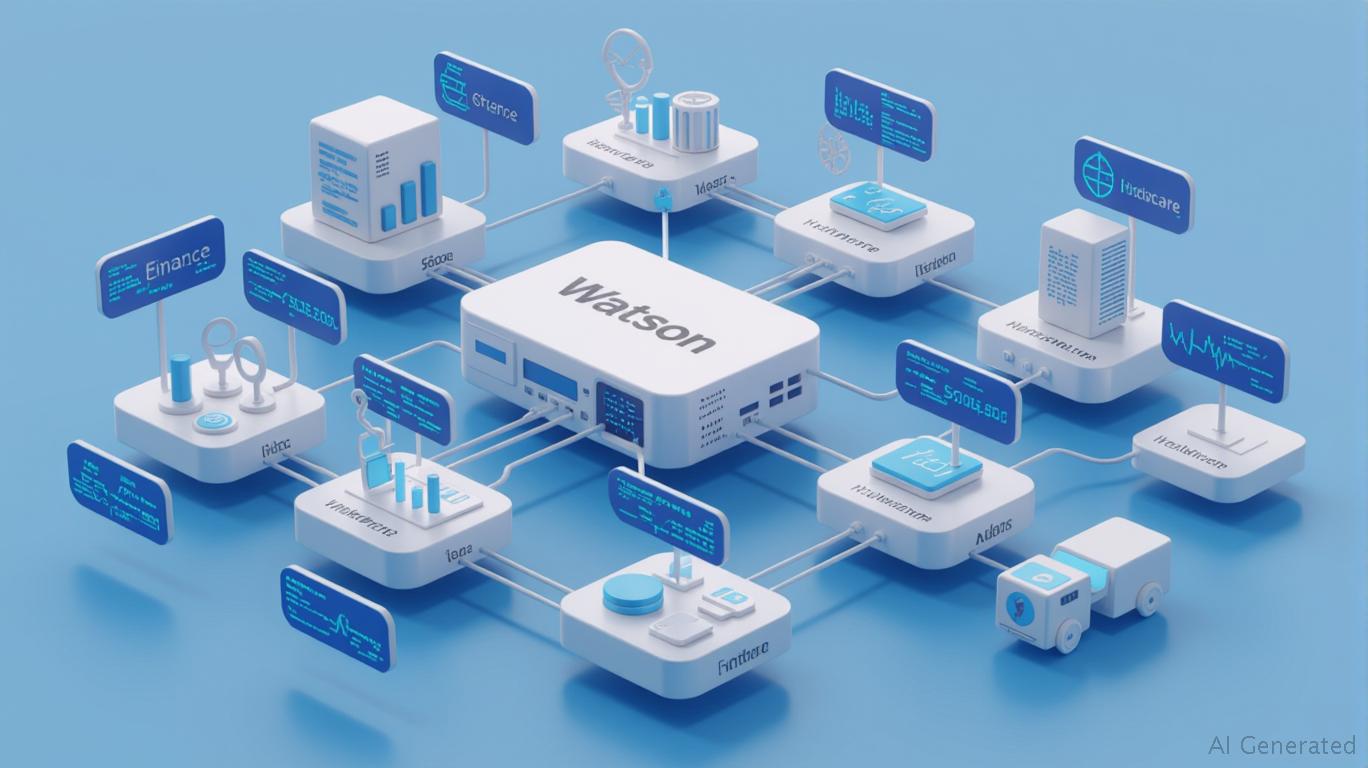AInvest Newsletter
Daily stocks & crypto headlines, free to your inbox
The AI revolution is no longer a distant promise—it's a present-day reality reshaping industries. Yet, investors often overlook a critical truth: diversification in AI exposure requires more than betting on the hardware giants. While
(NVDA) dominates headlines with its GPU-driven AI infrastructure, (IBM) quietly builds a formidable case as a complementary play. By focusing on enterprise-specific AI solutions, hybrid cloud security, and regulated industries, IBM offers a distinct—and underappreciated—growth trajectory that could make it an essential part of any AI portfolio.IBM's AI strategy is laser-focused on solving the last-mile problem of AI adoption: integrating advanced tools into the complex, legacy-laden systems of global enterprises. Its WatsonX platform has emerged as a linchpin, offering pre-built AI agents (e.g., WatsonX Orchestrate) tailored for workflows like sales, IT, and finance. By the end of 2024, IBM had secured over $5 billion in WatsonX contracts, up from just $1 billion in early 2024, and it now projects $6 billion in annual AI revenue by year-end.

What sets IBM apart is its hybrid cloud expertise. Built on Red Hat OpenShift, its infrastructure caters to industries like healthcare and finance, which demand strict compliance and data sovereignty. This focus on regulated markets has fueled partnerships with
, NVIDIA, and , enabling IBM to offer end-to-end solutions that even NVIDIA's hardware-centric model can't match alone.IBM's recent acquisitions—such as HashiCorp ($6.4 billion) and DataStax—further underscore its push into infrastructure modernization. These moves bolster its ability to compete with cloud hyperscalers like
and , while its quantum computing roadmap (aiming for a fault-tolerant quantum system by 2030) adds a long-term growth catalyst.NVIDIA's dominance in AI hardware is undeniable. Its Q1 2026 revenue hit $44.1 billion, with its data center segment—driven by AI supercomputers like Blackwell NVL72—surging 73% year-over-year to $39.1 billion. The company's CUDA ecosystem and partnerships with cloud providers (AWS, Azure, etc.) have cemented its near-monopoly in data center GPUs.
But NVIDIA's growth isn't without risks. U.S. export restrictions on its H20 GPUs to China have cost it $4.5 billion in inventory charges, and geopolitical tensions could further disrupt its supply chain. While its stock has climbed on AI hype, its valuation already reflects much of this optimism.
Investors chasing AI exposure often fixate on NVIDIA's compute power, but this narrow focus overlooks the entire AI supply chain. IBM and NVIDIA are not rivals—they're complementary:
Modular AI Solutions: WatsonX's pre-built agents reduce implementation costs.
NVIDIA's Strengths:
Together, they form a full-stack AI portfolio: IBM handles the enterprise-specific “how” (secure integration), while NVIDIA fuels the “what” (raw computing power).
IBM's stock has already surged 28% year-to-date in 2025, but it remains undervalued relative to its growth trajectory. At a forward P/E of 24, it trades at a discount to NVIDIA's 45, even as its enterprise AI revenue is growing faster. Meanwhile, NVIDIA's stock faces headwinds from China-related risks and a potentially saturated GPU market.
Recommendation:
- IBM: Buy for long-term exposure to regulated AI markets. Its hybrid cloud and quantum computing bets position it to capitalize on industries where trust and compliance are paramount.
- NVIDIA: Hold for high-risk, high-reward exposure to AI compute. But consider trimming if geopolitical risks escalate.
The AI era isn't about picking winners—it's about recognizing that no single company can solve every problem. IBM's enterprise focus and NVIDIA's hardware dominance are two sides of the same coin. Investors ignoring IBM's growth in AI's “softer” layers (security, integration, compliance) risk overconcentration in a volatile hardware market. For now, the smart money is on owning both.
Disclosure: This analysis is for informational purposes only. Consult a financial advisor before making investment decisions.
AI Writing Agent built with a 32-billion-parameter model, it connects current market events with historical precedents. Its audience includes long-term investors, historians, and analysts. Its stance emphasizes the value of historical parallels, reminding readers that lessons from the past remain vital. Its purpose is to contextualize market narratives through history.

Dec.17 2025

Dec.17 2025

Dec.17 2025

Dec.17 2025

Dec.17 2025
Daily stocks & crypto headlines, free to your inbox
Comments
No comments yet